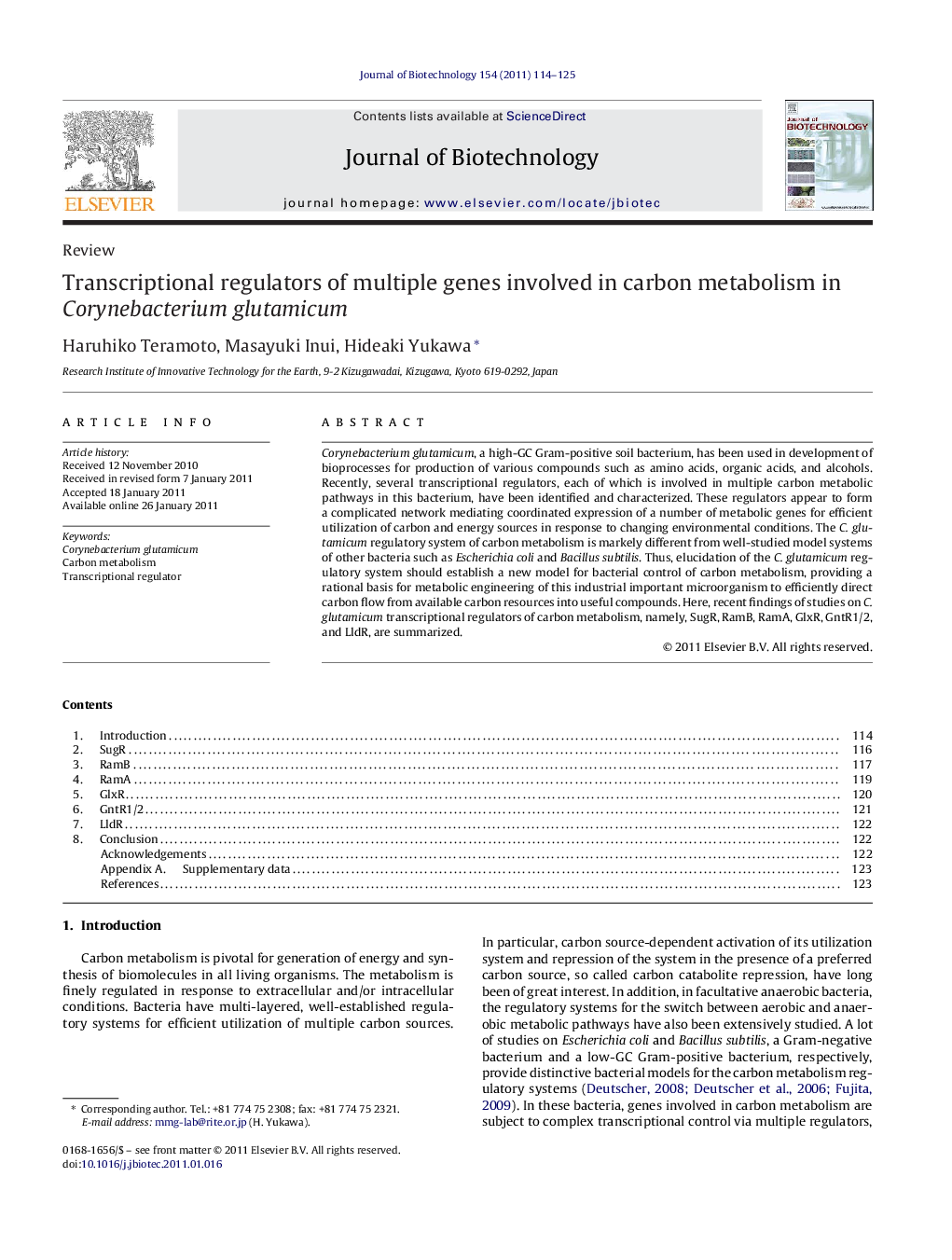| کد مقاله | کد نشریه | سال انتشار | مقاله انگلیسی | نسخه تمام متن |
|---|---|---|---|---|
| 23949 | 43484 | 2011 | 12 صفحه PDF | دانلود رایگان |

Corynebacterium glutamicum, a high-GC Gram-positive soil bacterium, has been used in development of bioprocesses for production of various compounds such as amino acids, organic acids, and alcohols. Recently, several transcriptional regulators, each of which is involved in multiple carbon metabolic pathways in this bacterium, have been identified and characterized. These regulators appear to form a complicated network mediating coordinated expression of a number of metabolic genes for efficient utilization of carbon and energy sources in response to changing environmental conditions. The C. glutamicum regulatory system of carbon metabolism is markely different from well-studied model systems of other bacteria such as Escherichia coli and Bacillus subtilis. Thus, elucidation of the C. glutamicum regulatory system should establish a new model for bacterial control of carbon metabolism, providing a rational basis for metabolic engineering of this industrial important microorganism to efficiently direct carbon flow from available carbon resources into useful compounds. Here, recent findings of studies on C. glutamicum transcriptional regulators of carbon metabolism, namely, SugR, RamB, RamA, GlxR, GntR1/2, and LldR, are summarized.
Journal: Journal of Biotechnology - Volume 154, Issues 2–3, 10 July 2011, Pages 114–125